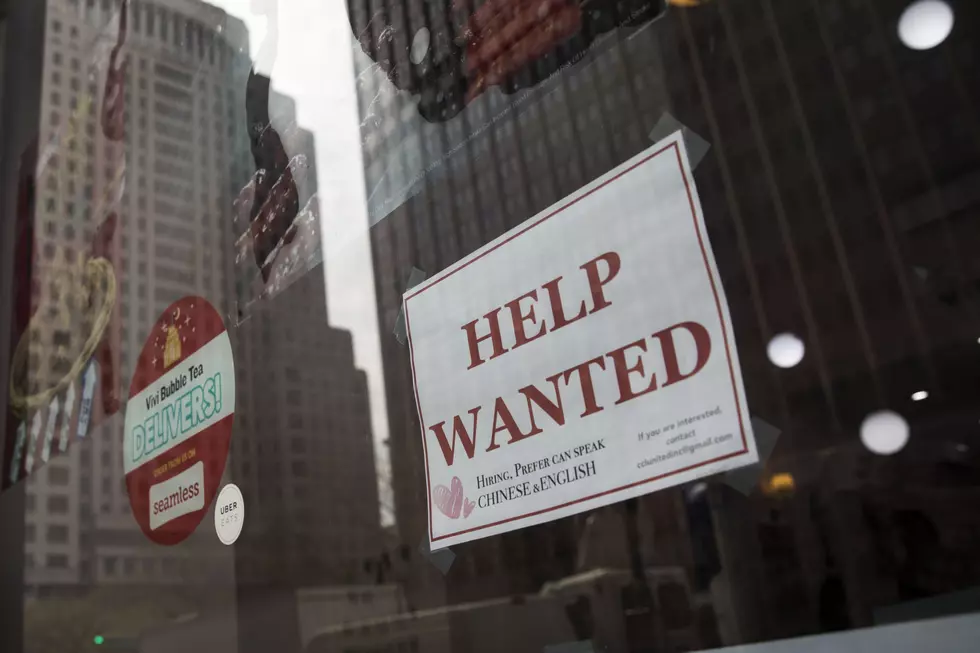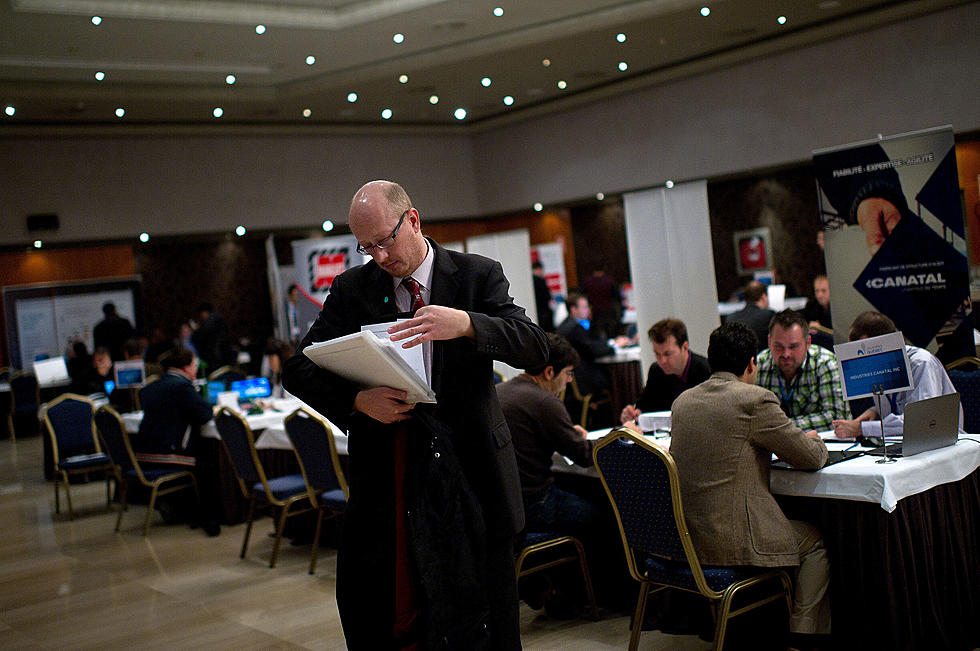
Mountain Economy, Tips for Jobless on the AM Zone
Today a 7:37AM MST, economist Ernie Goss will be our guest to update us on the latest mountain states economic report.The Goss Institute conducts the monthly survey for Supply Management Institutes in the three states comprising the Mountain States region. Goss also directs Creighton University’s Economic Forecasting Group and is the Jack A. MacAllister Chair in Regional Economics. For the 25th straight month, the overall index for the Mountain States region, a leading economic indicator for the three-state area of Colorado, Utah and Wyoming, advanced above growth neutral 50.0. The national index has risen above growth neutral for 26 consecutive months (www.ism.ws) but has remained lower than the regional reading. The gap between the results of the two surveys has widened, primarily as a result of Mountain States’ growth tied to the region’s large energy sector, exports and agriculture. Overall Index: The overall index, or Business Conditions Index, which ranges between 0 and 100, slipped to a solid 56.8 from 57.3 in October. An index of 50.0 is considered growth neutral. This is the second straight month that the regional index has declined. The overall index, or Business Conditions Index, is a mathematical average of indices for new orders, production or sales, employment, inventories and delivery lead time. This is the same methodology used by the national Institute for Supply Management. “As in past months, firms closely linked to energy or agriculture and those dependent on exports continue to report solid growth. The Mountain States regional economy, unlike that of the U.S., shows little evidence of an economic slowdown,” Goss Institute for Economic Research Director Dr. Ernie Goss said today. Employment: The November employment index expanded to 57.4 from October’s 53.9. “Since bottoming in January 2010, the region has added more than 85,000 jobs. However, the region will have to add another 156,000 jobs to return to pre-recession levels. Even at its current healthy rate of job growth, the region would not return to its pre-recession employment level until the first half of 2014,” said Goss.This month firms were asked about their hiring expectations for the next six months. “More than one-third, or 35 percent, expect to add workers, 13 percent anticipate layoffs, while the remaining 52 percent look for level employment for the next six months. “These expectations are somewhat more optimistic than September 2011 when 28 percent expected layoffs in the next six months,” said Goss.Wholesale Prices: The prices-paid index, which tracks the cost of raw materials and supplies, dipped to an inflationary 66.0 from 70.5 in October and 71.2 in September. “Just as the national economy has slowed, so have inflationary pressures. Lower inflation in the pipeline gave the Federal Reserve room to take the coordinated monetary easing action it initiated yesterday with five other central banks,” said Goss.This month supply managers were asked how much they expected prices of products they buy to increase in the next six months. Approximately 17 percent of the supply managers expect these prices to grow by more than 6 percent during the next six months. Overall, supply managers anticipate prices to grow by 4.0 percent over the next six months or approximately 8.0 percent on an annualized basis. “Last December when we asked the same question, supply managers expected annualized price growth of 6.8 percent. Thus, anticipated wholesale price growth has increased by 1.2 percentage points since last December,” said Goss.Inventories: Supply managers in the three-state region added to inventories of raw materials and supplies for the month with a reading of 55.6, but down from 58.9 in October. “This is the 24th straight month that we have recorded inventory growth, and it remains a growth factor,” said Goss.Business Confidence: Looking ahead six months, economic optimism, captured by the confidence index, advanced to a tepid 53.4 from 52.3 in October. “Supply managers in our survey remain pessimistic about economic prospects for the first half of 2012. Economic uncertainty in Europe and a frail U.S. housing sector were identified as factors weighing on the economic outlook,” said Goss.Trade: The regional export orders index expanded to strong 60.6 from October’s 59.4. The region’s import reading advanced to 58.5 from 55.4 in October. “Healthy export growth has been an important component of regional growth. However, I expect the slowing global economy to slow weigh on regional economic growth in the months ahead,” reported Goss.Other Components: Other components of the November Business Conditions Index were new orders at 56.2, down from 60.3 in October; The Institute for Supply Management, formerly the Purchasing Management Association, has been formally surveying its membership since 1931 to gauge business conditions (www.ism.ws). The Goss Institute uses the same methodology as the national survey. The overall index, referred to as the Business Conditions Index, ranges between 0 and 100. An index greater than 50 indicates an expansionary economy over the course of the next three to six months. The overall index is a mathematical average of new orders, production or sales, employment, inventories and delivery lead time.The Creighton Economic Forecasting Group has conducted the monthly survey of supply managers in Colorado, Utah, and Wyoming since 1994 to produce leading economic indicators of the Mountain States region. The Goss Institute assumed operation of the survey in August of 2008, working with NAPM-Utah (www.napmutah.org) and NAPM-Western Wyoming (http://www.ism.ws/sites/westwyoming/index.htm). Colorado: The state’s leading economic indicator, based on a monthly survey of supply managers in the state, advanced for November. The overall index, termed the Business Conditions Index, for November expanded to 56.2 from October’s 53.3. Components of the Business Conditions Index for November were new orders at 56.7, production or sales at 62.3, delivery lead time at 52.5, inventories at 53.4, and employment at 56.2. “Since employment bottomed out in January 2010, Colorado has added more than 44,000 jobs. However, even with this gain, the state needs to add another 96,000 jobs to return to its pre-recession level. Non-durable goods producers reported growth while durable goods manufacturers detailed pullbacks for the month. Both manufacturers and non-manufacturers in the state continue to depend more heavily on expanding the average length of the work week rather than increasing employment,” said Goss. Utah: The state’s overall index, or Business Conditions Index, a leading economic indicator, once again remained above growth neutral 50.0. Based on the monthly survey of the membership of ISM-Utah (www.napmutah.org), the overall index dipped to a healthy 56.4 from 56.8 in October. Components of the Business Conditions Index for November were new orders at 54.1, production or sales at 61.2, delivery lead time at 55.0, inventories at 56.8, and employment at 55.0. “Since employment bottomed out in February 2010, Utah has added more than 45,000 jobs. However, even with this gain, the state needs to add another 46,000 jobs to return to its pre-recession level. In addition to adding new workers, firms in the state continue to expand the length of average weekly hours worked for current employees,” said Goss.Wyoming: The state’s leading economic indicator from a survey of supply managers in the state climbed above growth neutral for the 25th straight month. The index, termed the Business Conditions Index, slipped to a still healthy 60.4 from October’s 60.9 and September’s 66.8. Supported by NAPM-Western Wyoming (http://www.ism.ws/sites/westwyoming/index.htm), surveys over the past several months point to an expanding state economy for the next 3 to 6 months. Components of the overall index for November were new orders at 63.0, production or sales at 47.6, delivery lead time at 73.2, inventories at 60.8, and employment at 57.6. “Since employment bottomed out in January 2010, Wyoming has added almost 10,000 jobs. However, even with this gain, the state needs to add another 5,000 jobs to return to its pre-recession level. In addition to adding new workers, firms in the state continue to expand the length of average weekly hours worked for current employees,” said Goss.
At 8:07AM MST, The holidays signal parties, celebrations, and gatherings with family and friends. Yet, what happens when your holiday cheer is drowned out by the fears, anxieties, and embarrassment surrounding unemployment? With so much of our identity and self-worth tied to our jobs, what happens when we are robbed of that identity by being unemployed? “If you are out of work, nothing is more uncomfortable than trying to respond gracefully,” says business psychologist Dr. Stephen A. Laser. “Even for family and friends who wish you the best and are aware of your being out of work, their well-intentioned inquiries about the progress of your job search can be unnerving.” So how do you handle unemployment during the holidays?
More From KGAB









